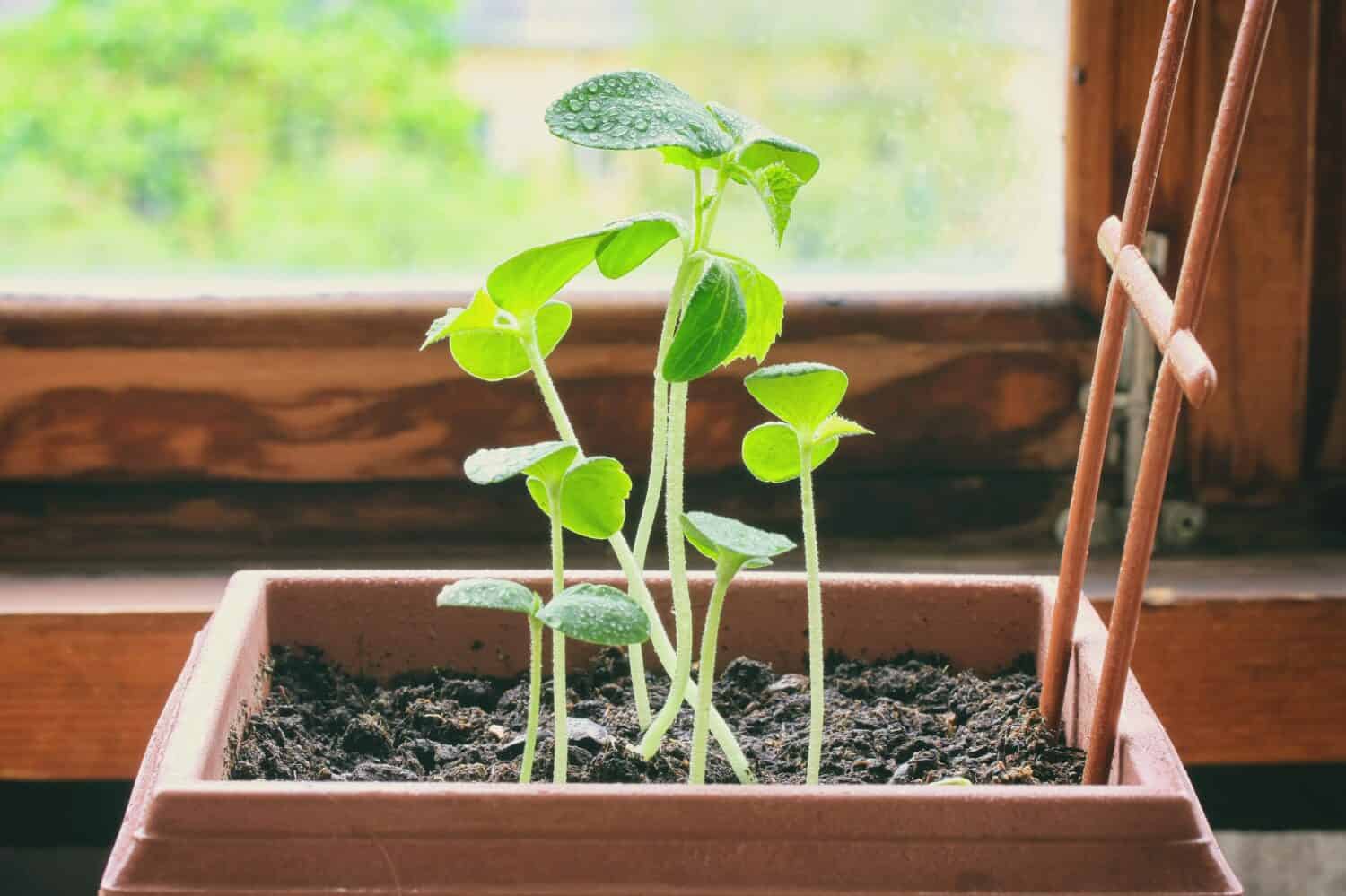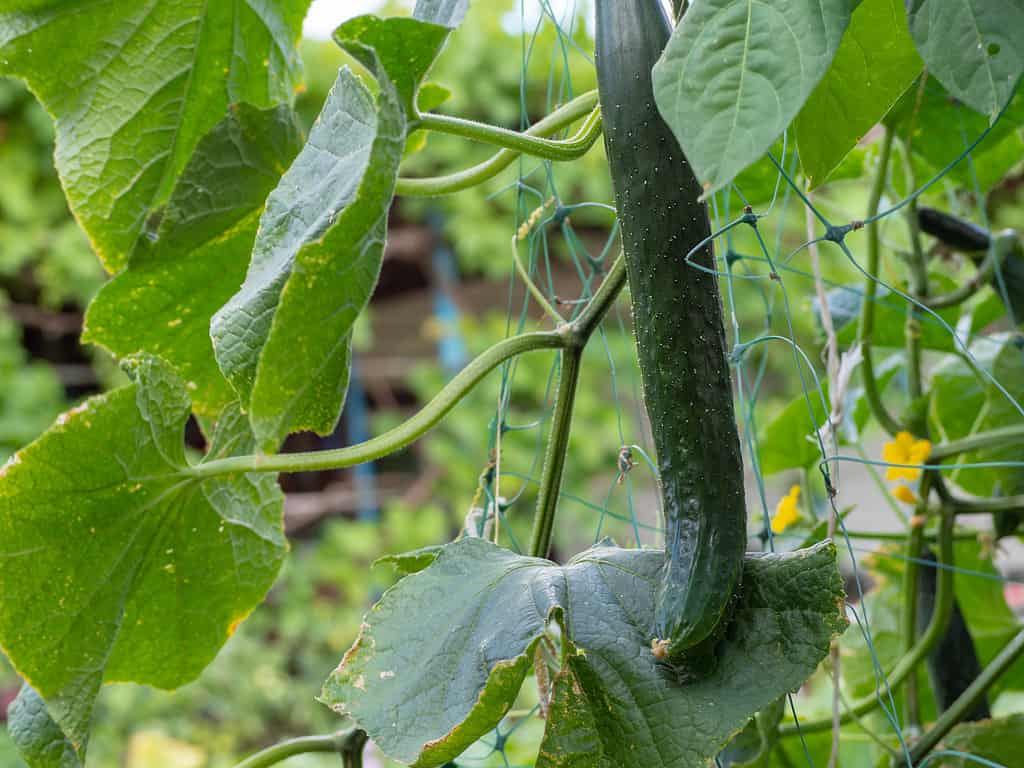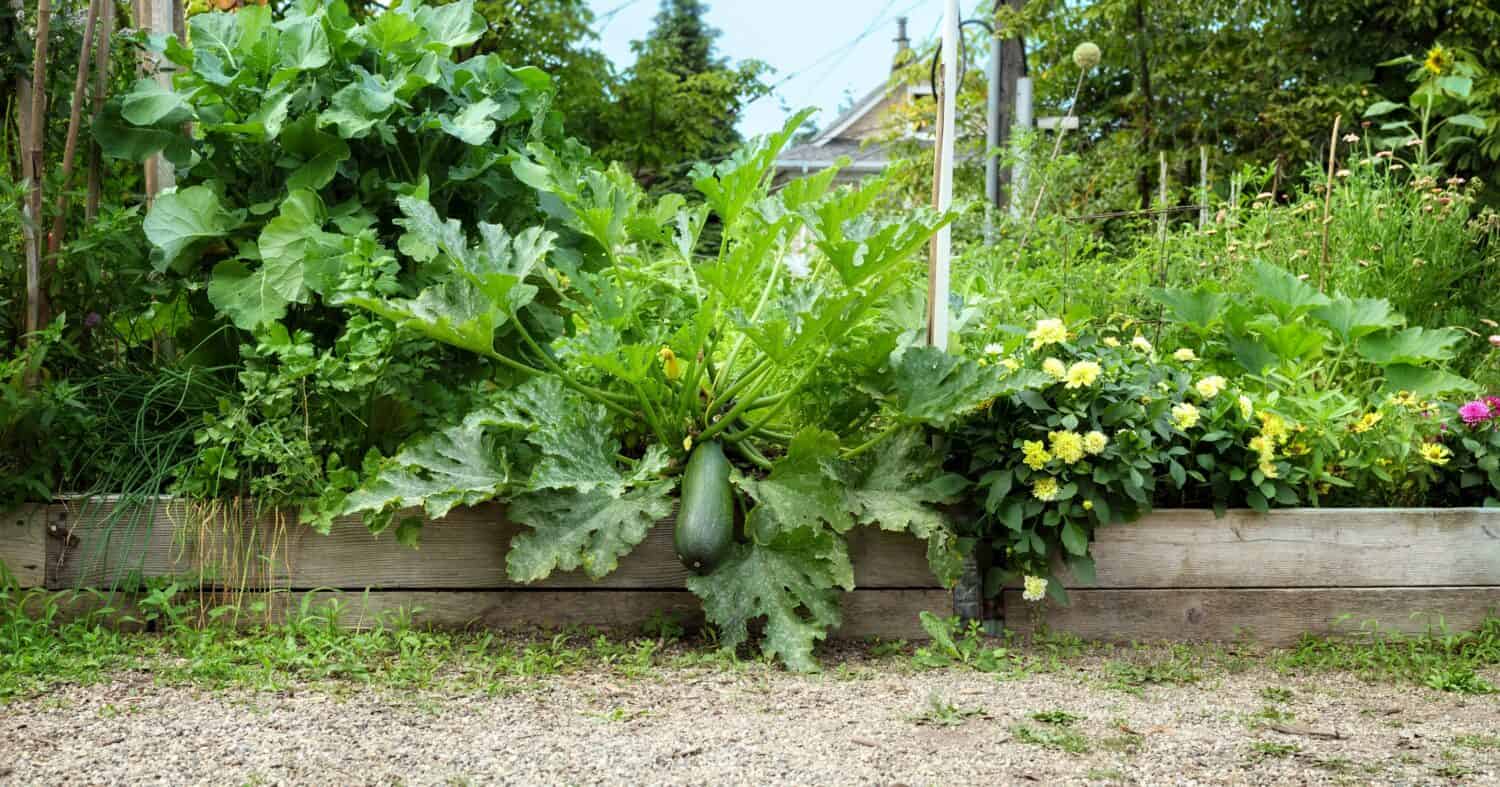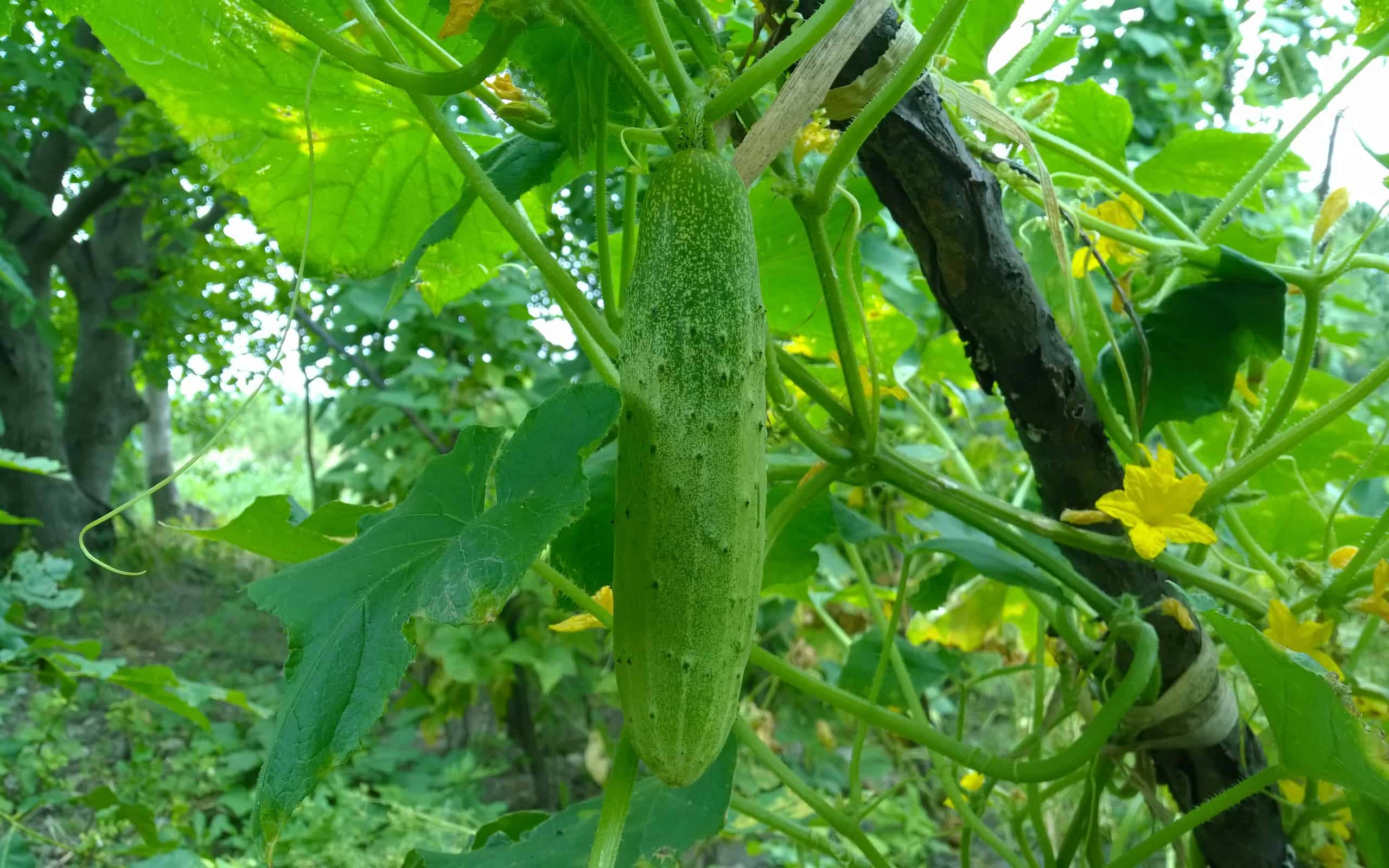Being the official record holder for the world’s longest cucumber is a notable achievement for a gardener. And it’s one that Sebastian Suski is very proud of.
During an especially long and rather unusual heat wave in the UK in the summer of 2022, Suski grew a three-foot, 8.6-inch long (113.4 cm) specimen of Cucumis sativus. That achievement landed his cucumber, which is taller than the average four-year-old child, in the Guinness Book of World Records.
Up until Suski claimed the award, the previous record for the longest cucumber was 3 feet, 6.13 inches (107 cm). Or was it?
The Tennessee Titan
Suski, who is originally from Poland, traced the seeds that grew his colossal cucumber back over a decade. “I’ve tracked the seed back 15 years to record-breaking specimens from the UK to Germany to Poland and back to the UK again,” he told reporters.
But seeds come to a gardener from many places.

Several giant cucumbers came from a ready-to-grow planter purchased at a Home Depot store in 2016.
©Xanya69/Shutterstock.com
Back in the summer of 2016 Butch Taulton, a retired road construction worker from Knoxville, Tennessee, purchased a ready-to-grow cucumber planter at a Home Depot store. The “magic” planter, as the local paper called it, produced six plants that all grew cucumbers measuring over 30 inches.
The biggest of these cukes came to 43 inches (109.22 cm) on the outside arch. Had only Taulton gone to the trouble of documenting his giant fruit with Guinness, he would have been the official record-holder to beat in the cucumber numbers game.
Taulton, however, said at the time that he wasn’t interested in going after a world record. And as far as local events are concerned, his cuke didn’t even make it to the Frederick Fair, as it was already too ripe to compete. It was also too big to turn into pickles. “I’ll take it and cut it down and keep some seeds for next year,” he told a reporter.
The Amazing Aussie Cuke
It seems that 2016, however, was a pretty special year for growers of colossal cucumbers.

Super-size cucumbers have been grown all over the world, including some unlikely locations such as Alaska.
©Aleksandr Krotkov/iStock via Getty Images
That year, an Australian teen grew a “sweet and striped” cuke that measured 4.28 feet (130.5 cm). That would have made 13-year-old Keegan Meyers the “official” world record holder had he bothered having it documented by Guinness.
But instead of earning him a plaque, his cucumber became chicken feed.
But Is It a Cucumber?
Another UK gardener, Kathy Ffoulkes was declared to be a world-record colossal cuke grower by the local paper. Her gargantuan sweet and striped cucumber came in at 4.46 feet (136 cm). After harvesting it in 2020, Ffoulkes did go to the trouble of having her garden giant officially certified by the strict Guinness World Record guidelines.
And it was. Only it wasn’t, botanically speaking, a cucumber.

The snake melon “cucumber” is also known as the Armenian cucumber. It can be eaten and pickled the same as a common cuke.
While what Ffoulkes grew in her backyard, which was supported by a clothesline, sure looked like a cuke, it was declared to be a part of the snake melon family. Snake melons (Cucumis melo var. flexuosus) include honeydews and cantaloupes.
Although the official Guinness page lists her prize-winner as the “longest snake melon,” it admits that its appearance and flavor are “closer to the common cucumber.”
Special Seeds
When it comes to growing large fruits and veggies for blue ribbons and records, seeds matter. Most specialty gardeners don’t count on Home Depot planters!
Special seeds have lines, ancestral vegetables that in some cases were world record holders themselves. The world of “heirloom seeds” even has a yearly expo!
Heirloom seeds have a “history.” They can be organic or not but are never genetically modified.
As a master gardener in the realm of giants says, “It starts with the seeds.”
Such pedigreed seeds are frequently exchanged at shows, such as the National Heirloom Expo, in Ventura, California, or can even be purchased online. One such site offers seeds from prize-winners such as the world’s largest-ever beetroot, or seeds from the former UK heavyweight champion bell pepper.
Competitive Gardening

A 2014 world record for the largest zucchini at 8 feet, 3.3 inches still stands. It was grown by a gardener in Ontario, Canada.
©sophiecat/Shutterstock.com
Anyone who enters the world of competitive gardening planning to go for an official Guinness title, quickly learns it’s not a fast process unless you pay. The first step is submitting an application, which can take three months to process. To speed things up, you can request priority review, which costs $800 to $1,000 in U.S. currency.
Once the title you’re hoping for is approved at the Guinness World Records headquarters, you’ll receive a list of the evidence needed to be submitted.
Guinness says that it receives around 1,000 applications a week from around the world.
As far as evidence goes, the best bet is to make sure plenty of folks — especially those in “official” capacities — see your giant cucumber, squash, or eggplant, and verify its size.
But there’s always the satisfaction, official title or not, that you were indeed able to grow a titanic tomato, a colossal cucumber, or a whopper of a watermelon. And sometimes that’s the best reward of all.
Thank you for reading! Have some feedback for us? Contact the AZ Animals editorial team.








